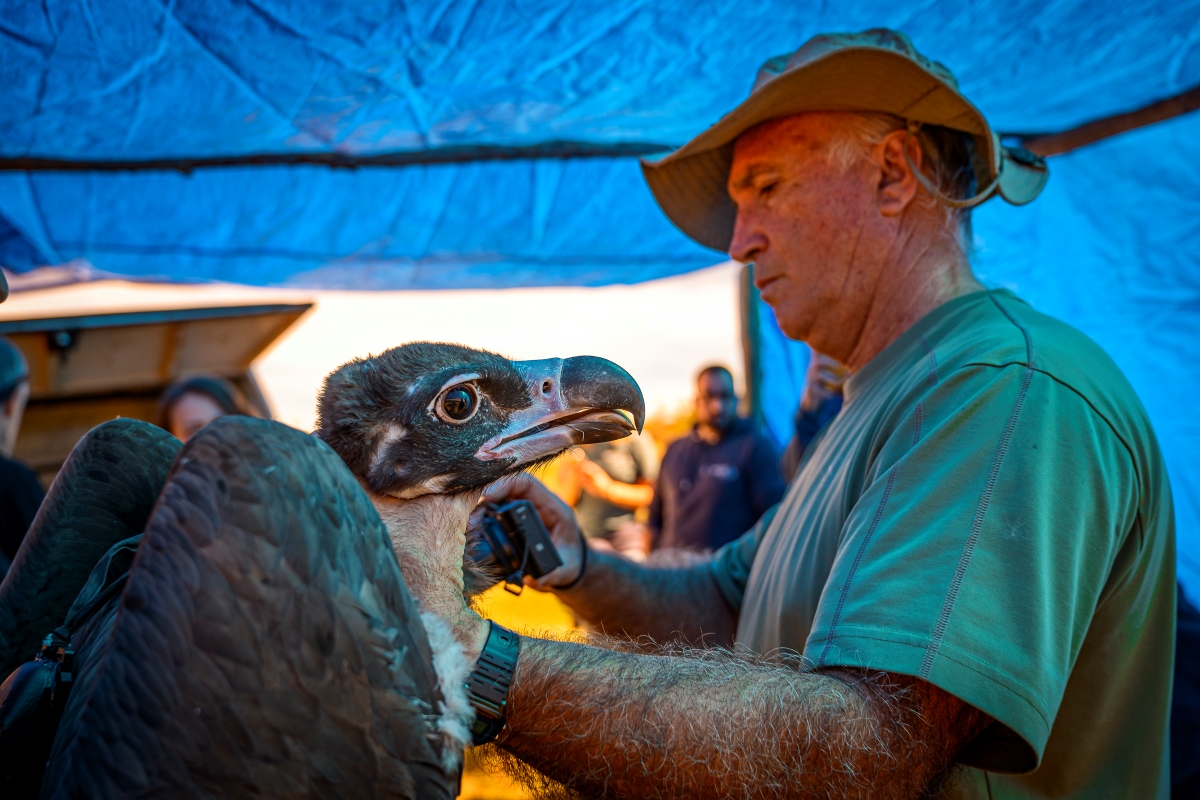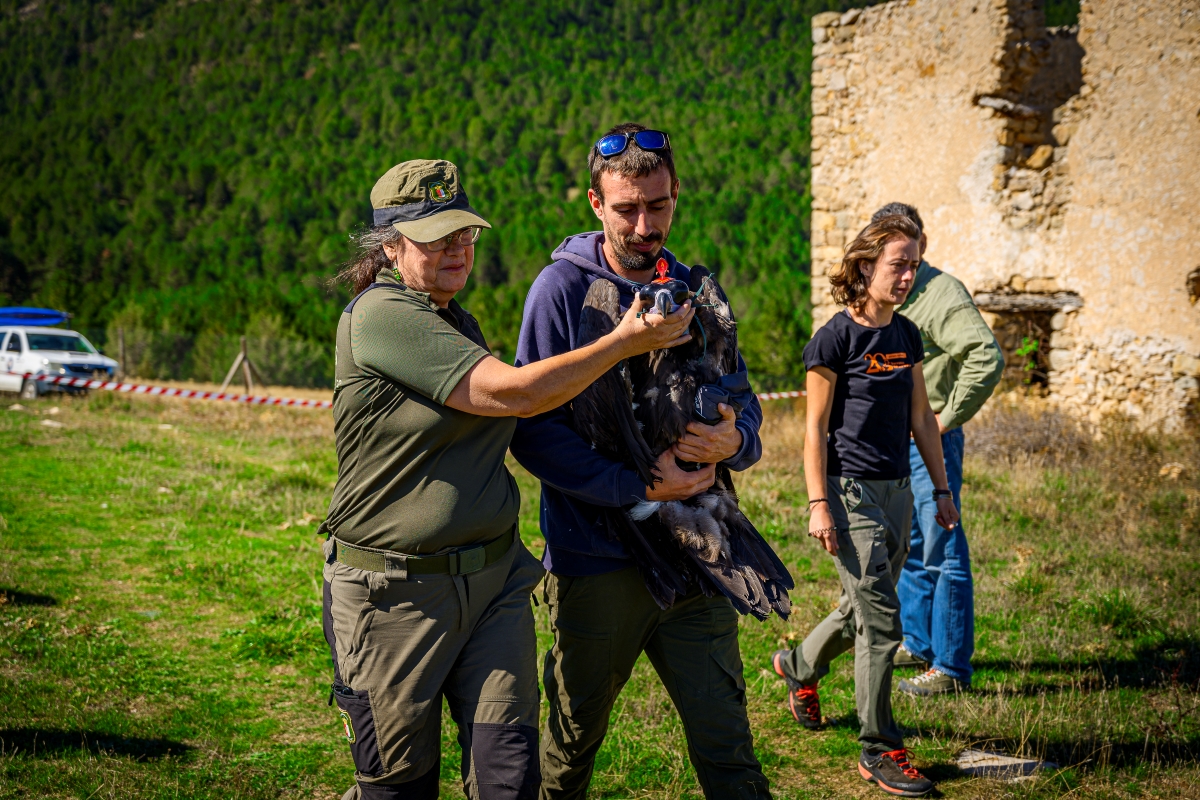Four cinereous vulture specimens (Aegypius monachus) have just been released in the Iberian Highlands, as part of the programme for the reintroduction of this endangered species.

The reintroduction programme of the cinereous vulture in the Iberian Highlands is led by the Department of Sustainable Development of the Regional Government of Castilla-La Mancha and the Alto Tajo Natural Park and the work is being carried out on the ground by Rewilding Spain and Terra Naturalis association. After this latest release, 21 black vultures have now been set free within the framework of this programme, which was launched in 2020 and aims to bring this scavenger bird, which disappeared from the landscape as a resident species a century ago, back to the Alto Tajo and Serranía de Cuenca regions.
Unlike the griffon vulture (Gyps fulvus), which nests on rocky walls, black vultures nest in the treetops, making it a species that is very sensitive to forest deterioration. The current protection status of the Alto Tajo and Serranía de Cuenca forests now provide the necessary conditions for the return of this necrophagous bird, whose feeding habits perfectly complement those of its griffon relatives.

The four black vulture specimens came from wildlife recovery centres and before their release they spent several months of adaptation in an aviary located in the Alto Tajo Natural Park. As well, a month before the release, the birds were equipped with GPS devices that allow to monitor their movements. These devices are very light, solar-powered transmitters that enable very precise tracking.The tagging task was carried out with the support of Víctor García Matarranz, a specialist from the Ministry for Ecological Transition and the Demographic Challenge (MITECO), and his team.
Essential adaptation period before the release
The adaptation period in the aviary “is essential to favour the settlement of black vultures in a new territory, as this is a species with a strong philopatry that tends to reproduce in the same place of birth’, explains Jorge Layna from Terra Naturalis, technical manager for this project. To facilitate their definitive settlement in the Iberian Highlands, six feeding points are managed by the programme. These are specific spots where the carcasses of livestock that die in the area are deposited. In addition, 21 nesting platforms have been built on trees, two of which have life-size decoys.

Next spring will be important for the programme, as it will be the first in which reintroduced specimens will reach breeding age, as Ángel Vela, managing director of the Alto Tajo Natural Park highlights: “The evolution of the programme has been satisfactory so far and now we are entering an important period. Next spring will be the first with the possibility of vultures breeding in the area, because some of them will reach the breeding age and this is the starting point for pair matching. There are several specimens already fixed in the area and some exogenous specimens coming from other breeding areas have also been spotted, which is promising and encouraging for the future”.
Pablo Schapira, Rewilding Spain’s team leader in the Iberian Highlands, stresses that “we are getting closer and closer to the return of the black vulture to the landscape, a very important goal to strengthen the essential role that necrophagous birds play in the ecosystem’s food chain. And this comeback is not only important from an ecological point of view, but also adds value to the territory from an ecotourism perspective.”
Want to know more?
- Two more cinereous vultures to join the reintroduction programme
- Five new artificial nests to favour the Cinereous vulture settlement in the Iberian Highlands
- Cinereous vulture comeback in the Iberian Highlands takes another step forward
